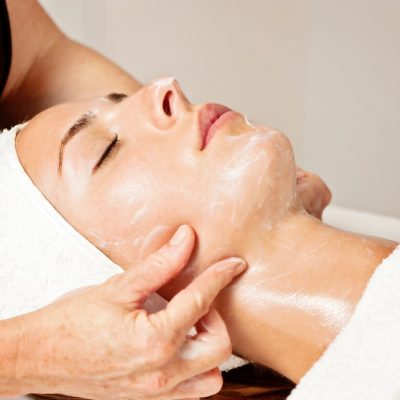A chemical peel is a popular non-surgical, anti-aging treatment that is an effective alternative to surgery. The process involves putting an acid-based solution onto your face, neck, hands, or other smaller areas of your skin. It is then washed away after a couple of minutes.
In some cases, more than one treatment is needed to see any noticeable results depending on the strength of the solution used. Phenol peels and other stronger peels might require a longer recovery time (up to three months) since the skin can take on a severe sunburned look after the procedure.
Chemical peels are used to help improve:
- Liver and age spots
- Acne or scars from acne
- Freckles
- Wrinkles and fine lines
- Scars
- Scaly patches and rough skin
- Skin pigmentation that is irregular
- Sun-damaged skin
Post Chemical Peel
Although having a chemical peel can sting, you shouldn’t feel any great deal of pain. There are various peels that are gentler that use lactic or fruit acids, glycolic or alpha-hydroxy. These can cause redness, stinging, crusting and irritation, however, once the skin starts to adjust, they should diminish. Your skin will be more sensitive to the sun following a chemical peel. This is temporary, but it’s important that you wear sunscreen every day.
The sunscreen you use should have ‘broad-spectrum’ on its label, which means it will protect your skin from the sun’s UVB and UVA rays as well. It should also be above an SPF 30. Even with sunscreen, you should limit how long you are out in the sun and if possible and avoid it between the hours of 10 am and 2 pm when it’s at its strongest. You should also refrain from smoking after a peel since it can cause undesirable side effects including scarring and infection.
Types of Chemical Peels
The American Society for Dermatologic Surgery identifies three main types of chemical peels.
Lunchtime or Superficial Peel
The med spa specialist will use alpha-hydroxy acid or some other mild acid to gently exfoliate and penetrate your outer layer of skin. This peel is used to improve the looks of rough skin, mild skin discoloration, and to refresh the neck, face or hands.
Medium peel
Trichloroacetic or glycolic acid is used to penetrate the middle and outer layers of your skin to remove skin cells that are damaged. This peel is used to improve wrinkles, fine lines, age spots, moderate skin discoloration and freckles. It also smooths rough skin and can help treat different types of precancerous skin growths such as actinic keratosis.
Deep peel
Phenol or trichloroacetic is used to penetrate the middle layer of your skin deeply and remove skin cells that are damaged. The peel also removes age spots, moderate lines, shallow scars and freckles. You should see a tremendous improvement in the appearance of your skin. This is a face procedure that can only be done once.
You’re a good candidate for a chemical peel if you understand the procedure, are in good health, and have realistic expectations of the results. If your goal is to smooth wrinkles, get rid of acne, eliminate age spots, improve the texture of your skin or reduce sun damage effects, you should be very pleased with the outcome of a chemical peel.





